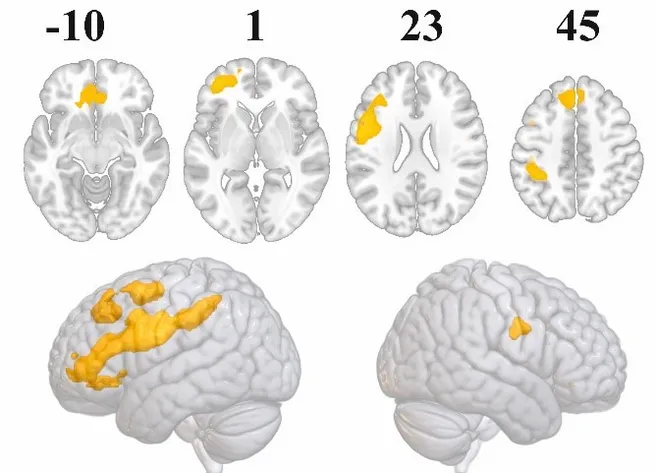The ability of mechanical problem solving enables us to infer the function of a tool based on its structure together with the recall of general mathematical and physical principles. The Novel Tool Test (Goldenberg & Haagmann, 1998) examines precisely this ability, which can be impaired in patients with apraxia. In this test, completely novel tools are presented together with a cylindrical object. The task is to select a suitable tool to lift the cylindrical object out of a socket. In our study, this test was presented in an MRI-compatible manner to healthy subjects while they were scanned by using a Tool Carousel. Patterns of brain activation were assessed during the planning and execution phases.
In this study it was shown that the tool-specific brain activation was only observable during the planning phase. The activated network is mainly left-hemispheric and comprises specifically the ventro-dorsal pathway with activation in the inferior parietal lobe, precentral gyrus and inferior and superior frontal gyrus.
These results provide important insights for a comprehensive understanding of the neural correlates of cognitive processes in tool use and provide important clues to possible compensatory mechanisms in apraxia patients. The causal role of these involved brain areas should be further investigated in future research.
Seifert, C., Kampe, T., Jäger, C., Randerath, J., Wohlschläger, A., & Hermsdörfer, J. (2025). Cortical representation of novel tool use: understanding the neural basis of mechanical problem solving. NeuroImage. doi.org/10.1016/j.neuroimage.2025.121073.
